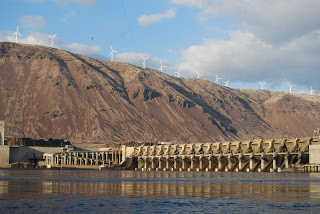Green Energy
- Investments In Renewable Energy Pay Off
By Nick Lawton, Staff Attorney States that invest in renewable energy are seeing strong returns, while those that cling to older methods of generating electricity are falling behind. As the price of renewable energy continues to plummet, this pattern...
- California Governor Jerry Brown Proposes Significant Rps Expansion
By Nick Lawton, Staff Attorney During his inaugural address on January 5, 2015, California Governor Jerry Brown announced three important goals for the state’s energy portfolio. Governor Brown framed these goals as part of an effort to mitigate climate...
- The Growing Economic Case For Renewable Energy
By Nick Lawton, Policy AnalystThe economic case for renewables continues to become stronger. Solar and wind energy facilities are simultaneously becoming more efficient and less costly. Today, in terms of levelized cost of energy...
- Withdrawal Of Assembly Bill 177 Threatens California’s Renewable Energy Leadership
By Nick Lawton, Energy Fellow California has long been a leader in renewable energy policy, but the withdrawal of Assembly Bill 177 threatens the state’s leadership by failing to strengthen its renewable portfolio standard (RPS). California was among...
- Withdrawal Of Assembly Bill 177 Threatens California’s Renewable Energy Leadership
By Nick Lawton California has long been a leader in renewable energy policy, but the withdrawal of Assembly Bill 177 threatens the state’s leadership by failing to strengthen its renewable portfolio standard (RPS). California was among the first states...
Green Energy
Drought Dries Up California’s Hydropower but Not its Vision for a Renewable Energy Future
California legislators recently passed a bill to increase the state’s Renewable Portfolio Standard (RPS) to require 50% renewables by 2030. That is, by the year 2030, at least half of all electricity consumed in the state must come from qualified sources like geothermal, solar, wind, and small hydroelectric. Raising an RPS can be a great way to encourage investment in renewable energy, and pursuing additional low-emissions sources may be particularly critical today as California suffers production losses from its hydroelectric facilities.
 |
| Credit: NREL and MWH Global |
In 2014, California generated approximately 47% less conventional hydropower than its ten-year average, according to data from the U.S. Energy Information Administration. While hydropower is often recognized as a low-emissions resource, most states limit the extent to which it qualifies under an RPS. This makes sense for encouraging investments in new technology, since many hydroelectric facilities were already online and operational before RPSs were adopted. (It also makes sense given hydropower’s significant environmental shortcomings.)
Unfortunately, excluding hydropower from an RPS can also mean that when hydropower generation decreases, producers have little incentive to generate the replacement power from a renewable energy source. Indeed, California lost hydropower and primarily saw a corresponding rise in natural gas production, according to a reportfrom the Pacific Institute. The report estimates that from 2012 to 2014 alone, the switch cost ratepayers $1.4 billion and raised California’s carbon dioxide-equivalent emissions by 8%. Those emissions included almost 14 million tons of carbon dioxide, plus other pollutants like nitrous oxides, volatile organic chemicals, and particulate matter. To be fair, California also saw more renewable facilities come online, but some say the new facilities were simply already in the pipeline.
Hopefully California’s new RPS will bring more renewable energy facilities online and help reduce the risks of an increasingly uncertain energy future. Droughts might reduce hydroelectric power (of late, something not unique to California), but that does not have to mean increased greenhouse gas emissions. Perhaps more Western states should consider following Hawaii’s and California’s leads in raising their RPS goals before they, too, face declining hydropower.
- Investments In Renewable Energy Pay Off
By Nick Lawton, Staff Attorney States that invest in renewable energy are seeing strong returns, while those that cling to older methods of generating electricity are falling behind. As the price of renewable energy continues to plummet, this pattern...
- California Governor Jerry Brown Proposes Significant Rps Expansion
By Nick Lawton, Staff Attorney During his inaugural address on January 5, 2015, California Governor Jerry Brown announced three important goals for the state’s energy portfolio. Governor Brown framed these goals as part of an effort to mitigate climate...
- The Growing Economic Case For Renewable Energy
By Nick Lawton, Policy AnalystThe economic case for renewables continues to become stronger. Solar and wind energy facilities are simultaneously becoming more efficient and less costly. Today, in terms of levelized cost of energy...
- Withdrawal Of Assembly Bill 177 Threatens California’s Renewable Energy Leadership
By Nick Lawton, Energy Fellow California has long been a leader in renewable energy policy, but the withdrawal of Assembly Bill 177 threatens the state’s leadership by failing to strengthen its renewable portfolio standard (RPS). California was among...
- Withdrawal Of Assembly Bill 177 Threatens California’s Renewable Energy Leadership
By Nick Lawton California has long been a leader in renewable energy policy, but the withdrawal of Assembly Bill 177 threatens the state’s leadership by failing to strengthen its renewable portfolio standard (RPS). California was among the first states...
